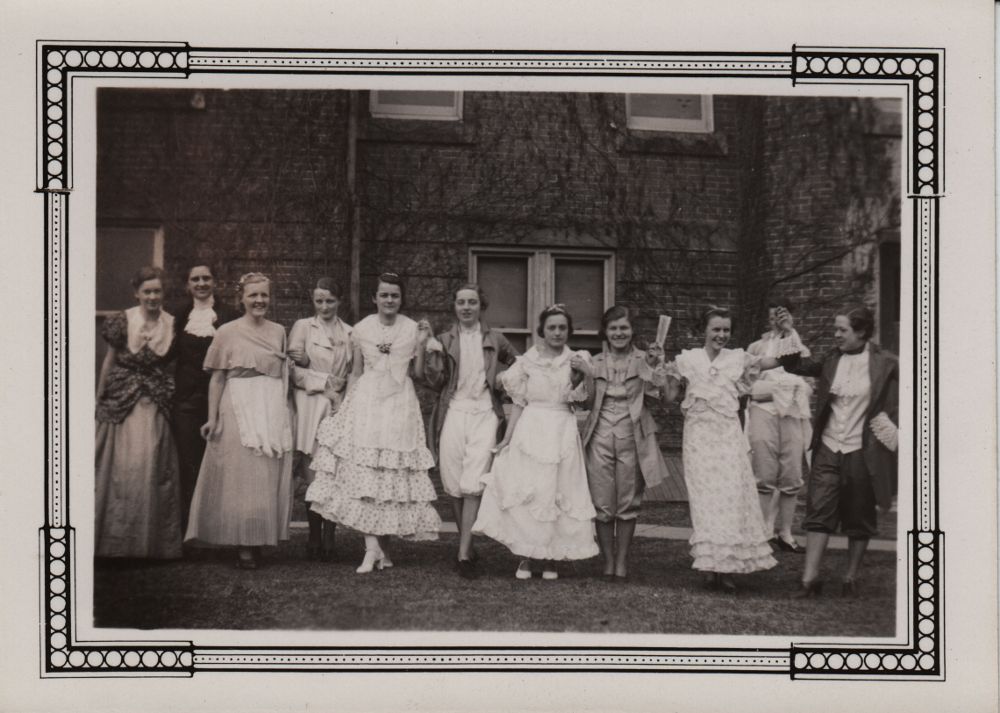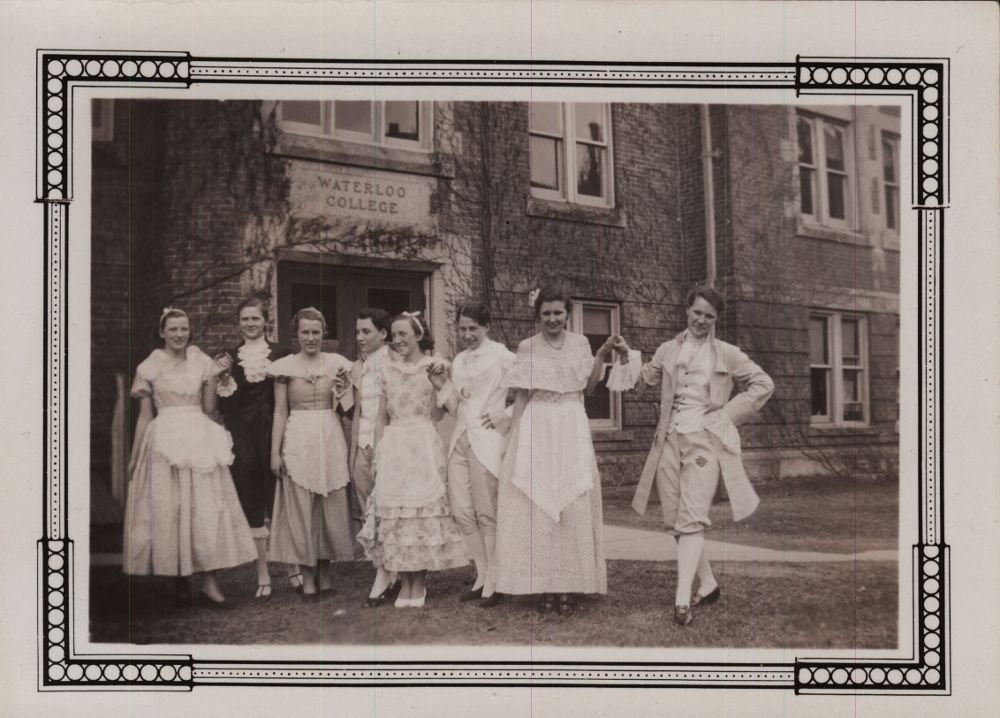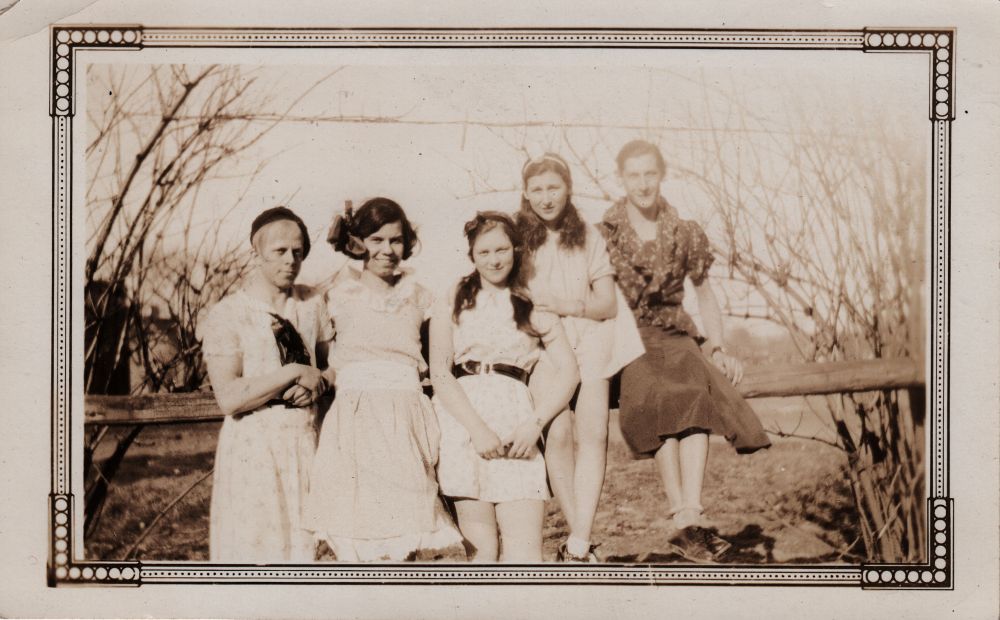One interesting aspect of how most of us regard history is a tendency to take the stereotypes we have of the 1950s as representative of the unchanging essence of our social world up to that point, and to assume that the loosening of constraints around gender and sexuality and many other things that began in the 1960s was completely novel in a world-historic kind of way. While the social constraints and the social organization of gender and sexuality in one moment are never quite the same as at any other moment, and certainly much that was new and different came about starting in the '60s, the idea that such constraints (and the social organization of gender and sexuality as whole) never varied at all until that point is not true at all. Whether you go back as far as the active campaigns by elites and non-elite men in the late Middle Ages in Europe to drive women out of many forms of work and out of public space more generally, or whether you just look at North America in, say, the 1930s, you will see that other, earlier times and places have been not only qualitatively different from the 1950s but arguably less oppressive and restrictive, and the constraints in these areas are not essential and unchanging but have always been social, imposed, and subject to resistance. Just to pick out three indicators that I'm aware of off the top of my head (though that I don't have ready references or links at hand to substantiate -- sorry!) showing less social constraint in the '30s than in the '50s, the proportion of graduate students in Canadian universities who were women was significantly higher in the former era than the latter (though the absolute number of graduate students in total was much, much lower); the frequency and semi-acceptance of sexual activity before marriage, meaning particularly sexual activity that wasn't going to get anyone pregnant, was somewhat more common than in the '50s; and there were physical and social spaces in which queer and gender-variant people could more safely and openly be themselves in the '30s and before than was true in the '50s.
In particular, right now I am wondering about what spaces and practices might have existed for playing with gender in the Canada of the 1930s. I have been wondering this because of a few old family photos I have discovered. Late last year, an aunt gave me two large boxes of photos taken between the early 20th century and today, and I have slowly but surely been scanning them and adding as much metadata to the files as I can. One of the frustrations of doing this work is how infrequently people seem to think of writing the basic information about a print on its back, or otherwise preserving for posterity who is in it, what they are doing, and when and where it was taken. This is particularly a problem with the older photos where the subjects are no longer alive. I can certainly recognize some of my relatives from my grandparents' generation, and older relatives can recognize more, but there is still so, so much that is preserved in these images but that we no longer have the context to understand.
The three images that I'm concerned with here show, as far as I can tell, people dressing in clothes associated with a different gender than the one as which they usually moved through their lives. I'm not claiming at all that these are indicative of anything resembling experiences we might label "queer" or "trans" today -- given my understanding of how queerness and gender variance were socially organized back then, I think it is highly unlikely that a young middle-class white woman from a churchgoing family in 1930s small-city Canada would have created and then preserved photographic evidence of any behaviours that would have been read by people with power over her as transgressive and/or degenerate. These photos no doubt show socially sanctioned gender play. Which, of course, is one guise under which people with more transgressive yearnings when it comes to their sexuality and/or their gender have always explored those yearnings, so that may be hidden under the surface as well, but really what they make me wonder is what their likely socially sanctioned character says about how gender and playing with gender worked back then.
The first two show a group of women dressed in what even then would have been read as old-timey clothes, some as women and some as men, and holding hands in ways to imply couples.


As you can see in the second of those images, they were taken at Waterloo College, which was what the institution currently known as Wilfred Laurier University was called back then. I don't recognize any of the women in these two photos, but they were in among other images of and belonging to my paternal grandmother, who attended Waterloo College in the early to mid 1930s. It seems likely that these were hers, and perhaps she was even behind the camera. I have no idea why they were dressed like this. It's plausible that it was for a play or other theatrical production, but it's not clear why women would have been playing men -- Waterloo College was not a women's institution but rather was co-ed.
The other photo shows a group of young people in contemporary clothing leaning against and sitting on what appears to be the remains of a fence.

All five of the people in this photo are dressed as women. The way that I read it is that at least two of these people are men who are dressed as women. Obviously making this kind of judgement is fraught with the possibility for all kinds of errors and for misgendering people. And, of course, the fact that you can't really know says a lot about the nature of gender itself. But I've shown the picture to at least two other people and they read it likewise, and one of the people that I read as a man (the one in the dark skirt who is sitting on the crossbeam) appears (at least I think so) in a different photo dressed as a man. The middle person in this one is, incidentally, my grandmother as a young woman (looking very much like my sisters at that age). Judging by her apparent age, it too is from the early 1930s. This scene seems to be less consistent with it being connected to some kind of theatrical production, though that is still possible, and it makes me even more curious about what exactly is going on.
My curiosity about these photos will probably never be satisfied -- write on the backs of your prints, people, and add metadata to your electronic photos, because inquiring minds in future generations will want to know! In the meantime, I wonder if anyone has ever done any work on exactly how gender and gender play were put together in small-city white middle-class Ontario in the 1930s. Anyone have any references to suggest?





No comments:
Post a Comment